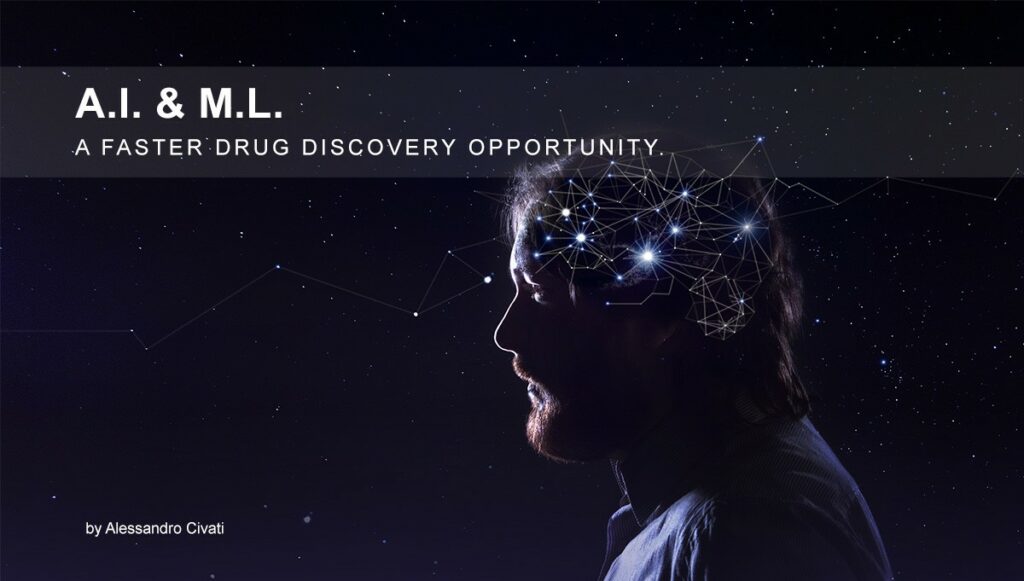The COVID-19 pandemic has brought to the fore the importance of faster methods of drug discovery and development. New variants of disease-causing pathogens can wreak immeasurable havoc before the discovery of new and effective treatments.
The emergence of new technologies is helping speed up the discovery process right to the approval of new drugs. New drugs will only work if they can stick to the target protein molecules in the body. Machine learning and artificial intelligence are helping in the speeding up of necessary calculations on the binding affinity of drug molecules to proteins in the body.
Determining the affinity of a drug molecule is a significant challenge in the drug discovery and screening process. Scientists are employing a combination of chemistry and associated sciences with machine learning to surmount the challenge.
Scientists are employing a new technique called DeepBAR to calculate the binding affinity of drug candidates and the targets. Using this approach, the time that goes into the development and approval processes can be significantly shortened through precise calculations in a fraction of the time taken by previous methods.
DeepBAR is projected to help fast-track critical processes in protein engineering and drug discovery, according to professionals in the medical and pharmaceutical world. According to Bin Zhang, the Pfizer-Laubach Career Development Professor in Chemistry at MIT, an associate member of the Broad Institute of MIT and Harvard, the novel method is many times faster than other previous methods. That means DeepBAR can provide an efficient and reliable method in drug discovery.
The affinity between drug molecules and target proteins is measured using a quantity referred to as binding free energy. The figure obtained should be lower, representing the stickier the bind between drug molecule and target protein. The lower binding free energy implies that the drug under discovery is better able to complete for the target site than other molecules increasing the chances of disrupting the normal functions of that protein.
The calculation of the binding free energy of a drug candidate helps indicate the potential effectiveness of a drug. However, the process of arriving at the quantity is quite tedious. The currently used methods of computing the binding free energy are categorized into two broad areas.
- Category 1: The calculation of the quantity right down to a precise figure will eat up significant time and computer resources.
- Category 2: This option utilizes fewer computational resources, which is comparatively cheaper. The final figure is an approximation of the binding free energy rather than the exact quantity.
The new technique devised by Zhang and the team can get the best out of the two categories. DeepBAR is exact and efficient when computing binding free energy and uses only a fraction of the calculations commonly used in the older methods. This new technique uses a combination of traditional chemistry calculations and the most recent advances in machine learning.
The word “BAR” standards for Bennett Acceptance Ratio is a decades-old algorithm used in the exact calculations of binding free energy. Using the Bennett acceptance ratio, you need to know the two endpoint states – the drug molecule bound to a protein and a drug molecule completely dissociated from a protein. Additionally, you need to know several intermediate states, including the different levels of partial binding. That means that the overall calculation speed will be severely affected.
DeepBAR will help cut back the time required to learn the in-between states by using machine learning frameworks called deep generative models. Using the models will help create reference states for each endpoint – the bound and unbound states. The completed reference states are very similar, allowing the direct use of the Bennett acceptance ratio without having to go through all the costly intermediate steps. The use of deep generative models was heavily borrowed from the computer vision field. The models are very similar to the models that people use to undertake computer image synthesis. The researchers explained that each molecular structure is being treated as an image that the model can learn. The DeepBAR is building on the efforts of the machine learning and artificial intelligence communities.

Adapting the computer vision approach to chemistry and drug discovery is the main innovation of the DeepBAR project. There are challenges that the researchers faced in that they were dealing with molecules and proteins, which are essentially 3D structures. It was a huge technical challenge that we had to surmount to use the models in the pharmaceutical field.
The tests carried out on small protein-like molecules revealed that DeepBAR calculated binding free energy 50 times faster than the previously used methods. The efficiency of the new technique means that it can find widespread use in drug-screening processes.
In the context of the ongoing COVID-19 pandemic, efficient drug testing and screening may lead to the faster production of cures for the disease. A shortened drug development cycle means that lives can be saved since people can access efficient treatment. DeepBAR has the same high levels of accuracy as the gold standard but is actually faster.
Besides drug screening, the DeepBAR approach can be used in protein design and engineering. The technique can be used to model the interactions between multiple proteins.
Essentially, DeepBAR has been lauded as a charming computational piece of work that will have very few hurdles before it’s used in real-world drug discovery. The testing of the new technique against complex experimental data to be validated is all that remains. It is expected that the complex data will pose added challenges that may require further fine-tuning of the models using different approximations.
The researchers plan to further improve the capabilities of DeepBAR in running calculations for larger proteins. The possibility is there considering recent advances in technology both in machine learning and artificial intelligence. The research reveals that it’s actually possible to combine traditional computational chemistry methods and the latest developments in technology.

Author: Alessandro Civati
Blockchain ID: https://x88.life/89vsVqeabt


